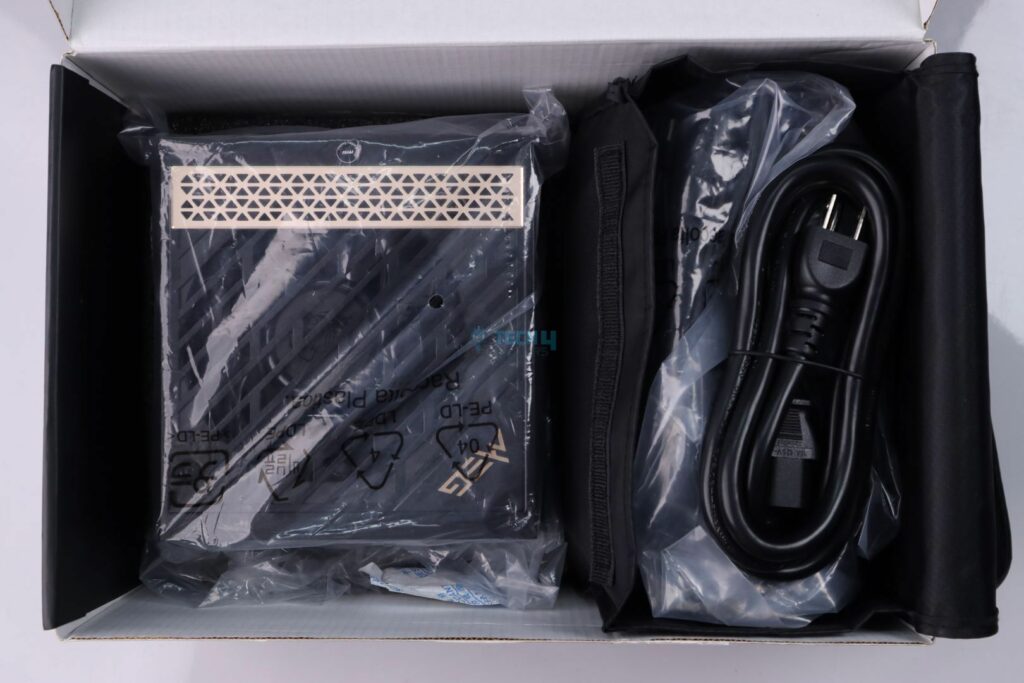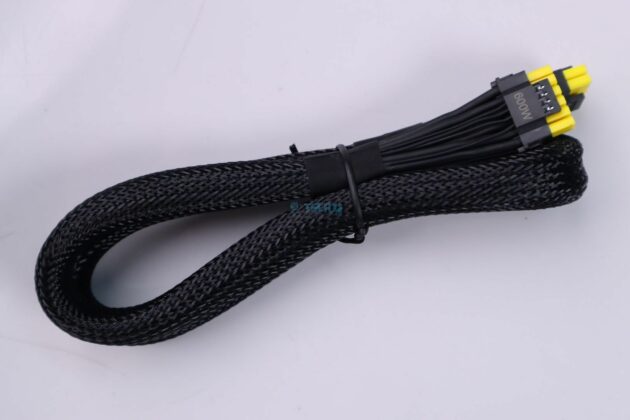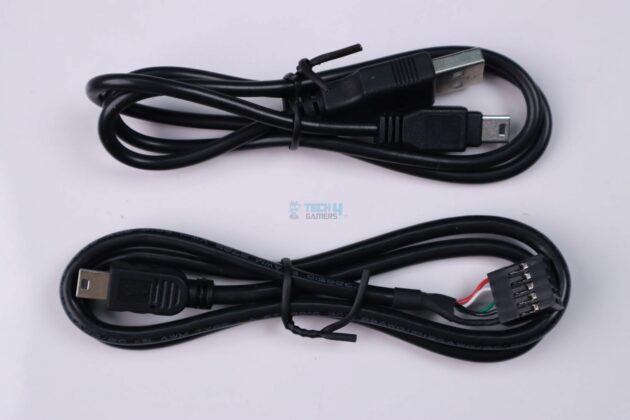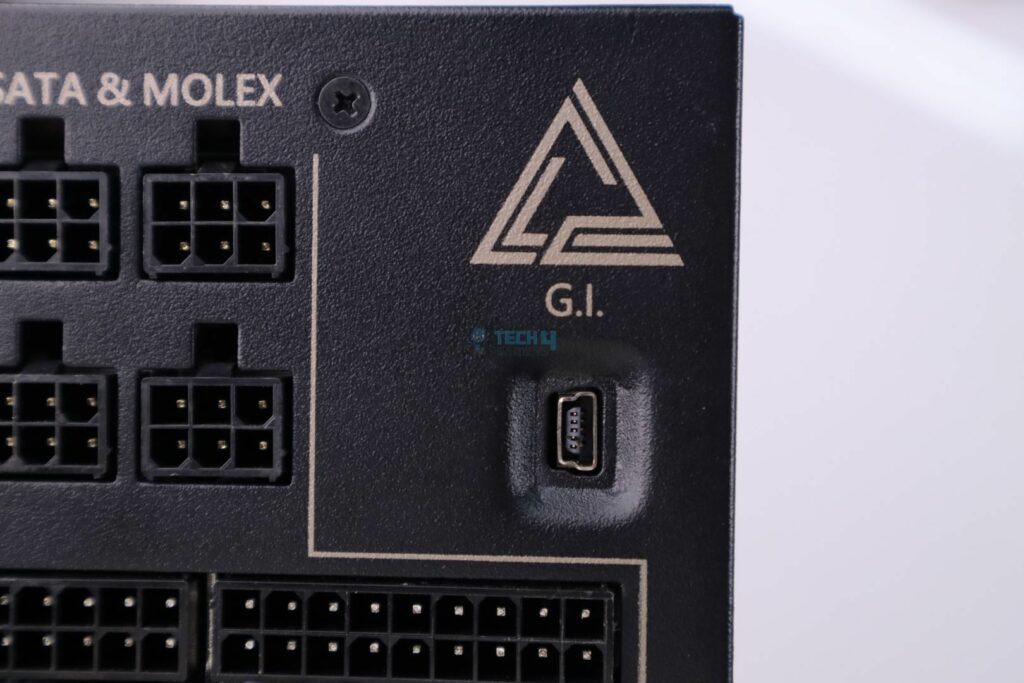Worth It?
Review Summary
The MSI MEG Ai1300P Platinum is a high-end PSU designed to handle the heavy power demands of modern GPUs, with top-tier components and a fully modular design. Though its voltage ripple performance isn’t exceptional, it delivers solid efficiency and remains impressively quiet during lighter loads.
Hours Tested: 8

Overall
-
Performance - 9.3/10
9.3/10
-
Build Quality - 9.3/10
9.3/10
-
Efficiency - 9.3/10
9.3/10
-
Value - 9/10
9/10
Pros
- Platinum Efficiency
- Good Voltage Ripple Performance
- Silent
Cons
- Still using older 12VHPWR GPU connector
- Voltage Regulation needs to be improved
MSI, with their MEG Ai1300P Platinum PSU, has now beefed up its muscles even more, proving its commitment to extremely high-quality and high-end PSUs to tackle the need for insanely high power requirements of current and upcoming generation of GPUs.
With the addition of MEG Ai1300P Platinum in MSI’s arsenal, MSI is now able to compete with some of the well-reputed PSU brands that offer a wide range of options for mid to high-end Gaming PC enthusiasts.
At this point, I have reviewed MSI MPG A850G PCIE5 & MSI MAG A1000GL PCIE5, both are based on the latest ATX 3.0/3.1 specs and performed exceptionally well in our tests. I expect the same or even better performance results for MSI MEG Ai1300P PCIE Platinum PSU.
You may see the above-mentioned PSUs with ATX3.0 compliant stickers on their boxes, but their recent stock comes with ATX3.1 stickers on the box. It is important to mention that the changes in the newer ATX3.1 specs are only for the newer PCIe 5.1 GPU connector for better safety, and the other difference is lower Hold-up time, which, in a way, is a downgrade from the previous ATX 3.0 specs. So, any PSU that meets the ATX 3.0 specs is already an ATX 3.1 compatible PSU, as long as the manufacturer upgrades to the newer PCIe 5.1 GPU connector.
Key Takeaways
- The MSI MEG Ai1300P Platinum is a powerful, fully modular PSU that combines premium build quality with impressive efficiency, designed for demanding gaming setups.
- You should buy the MSI MEG Ai1300P Platinum if you want solid performance, absolutely silent noise profile, and customization options using a software.
- You should skip the MSI MEG Ai1300P Platinum if the Platinum efficiency rating is an overkill for you and you’re good to go with an ATX 3.1 Gold PSU.
Here are the specifications:
| Specification | Detail |
|---|---|
| 80 PLUS Efficiency | Platinum |
| Modular | Fully |
| Total Power | 1300W |
| Input Voltage | 100-240V |
| Input Frequency | 50-60Hz |
| Fan Size | 125mm |
| Protection | OPP, OVP, OPP, OTP, SCP, UVP |
| Dimension (D x W x H) | 160 x 150 x 86 mm |
MSI’s Confusing Naming Schemes
At the rate at which MSI has been getting many of its different variants’ PSUs manufactured, I think MSI itself seems to be having a hard time deciding how to come up with different naming schemes. Just to give you guys an example, MSI has its PSU lineups with the main name tags such as MEG, MPG, and MAG (Enthusiast/Flagship, Premium & Mainstream, respectively). If that’s not all, they also have similar letters at the end that confuse things, such as A850G & A850GL are two PSUs from completely different series where L in A850GL represents the Low-cost series.
MSI’s Ai1300P’s being from the MEG (Enthusiast/Flagship) series and having P (Platinium) in its name makes things slightly less confusing. That’s because I had to write all that so that you could finally understand these Massive Confusing Gibberish (MCG in short) naming schemes!
Packaging & Unboxing
The overall design of the box is very premium. A side profile of the PSU is printed and it matches the theme. However, there are way too many logos about the different features. Similarly, I think the “ATX 3.1 Ready” and “PCIe 5.1 Ready” text could have looked better.
At the back, you’ll find info about the cables, power specs, and other features like efficiency and Gaming Intelligence.
The power supply is packed in protective black foam, and MSI has opted for recyclable plastic inside, which is a nice bonus.
Design
I love how the PSU looks from the top. The contrast is very good and different from the other PSUs I have tested recently. The fan seems off centered, which is a bit weird, but overall the design is great.
The side design follows the same theme. It is simple, subtle, and gives off a premium feel.

The power supply’s fully modular design lets you plug in just the cables you actually need, helping keep everything tidy and making cable management a breeze.
Cable & Connectors
The cables come in a soft fabric pouch that feels nice to handle. They’re also long enough, so you won’t have any trouble during installation in an ATX build.
The 12VHPWR connector has a dual-color design that makes installation easier. If it’s inserted correctly, the yellow part won’t be visible, giving you a quick way to confirm it’s fully connected.
| Connector | Quantity |
|---|---|
| Motherboard 24 (20+4) Pin | 1x |
| CPU 4+4 Pin | 1x |
| PCI 5.0 16 Pin | 1x |
| PCIe 6+2 Pin | 8x |
| SATA 15 Pin | 16x |
| Molex 4 Pin | 4x |
| FDD 4 Pin | 1x |
The recent outbreak of artificial intelligence has made the term AI mainstream, and now, many big brands’ marketing teams are working really hard to come up with unique and catchy terms. MSI didn’t seem to work that hard, I guess, as they have coined the term GI, Gaming Intelligence (I mean, it doesn’t sound that stupid if you consider the term Apple Intelligence).
I can’t seem to wrap my head around what part of Gaming Intelligence actually reflects the real intelligence in MEG Ai1300P, especially when I see the good old mini-USB connector still being used in 2024. I mean, you do get the feature of controlling and monitoring most of the PSU functionality on your PC and can adjust the fan curves and all, but that’s just it!
As I said in the introduction, MSI had first marketed this PSU for ATX 3.0. Later, when the new ATX 3.1 specs came in from Intel, the PSU brands only had to upgrade to a newer PCIe5.0 GPU connector, which is now referred to as a 12V-2×6 connector (previously known as 12VHPWR connector).
Quite weirdly, the sticker on the box has been upgraded to state newer ATX 3.1 specs but not the newer 12V-2×6 GPU connector! Though the new 12V-2×6 is a must at the GPU’s end and not the PSU because cables from the PSU’s modular end don’t get bent or twisted that much compared to the GPU’s end, but still when the Intel ATX 3.1 states that every brand must use 12V-2×6 from now on, MSI should also do the same.
Teardown & Component Analysis
MSI MEG Ai1300P Platinum is based on an upgraded platform from CWT, which is an already proven and extensively adopted platform by many well-known PSU brands for the latest ATX 3.0/3.1 specs, which I have also reviewed several times in the past.

CWT has made slight changes in their platform mainly because MSI must have asked them to somewhat make use of “Ai” in Ai1300P. This slight change gives users a software-controlled feature for adjusting Fan Curves, Overcurrent Protection, Monitoring different power parameters, etc. MSI also decided this time to go with a Semi-digital platform, but I, being an absolute sucker for superior ingenuity and innovation, always desire to see a Fully digital PSU.
MSI MEG Ai1300P Platinum uses Interleaved PFC, Full-Bridge & LLC resonant converter topology. Unlike other brands that directly opt for CWT’s traditional aluminum heatsinks, MSI is using its own uniquely designed aluminum heatsinks with a much larger surface area. There are individual uniquely shaped heatsinks attached to separate vital components for better heat dissipation.
Platinum-rated PSUs don’t usually have any trouble when it comes to high operating temperatures as they are extremely efficient in power conversion but the use of bigger heatsinks doesn’t stress the fan to spin up faster, and with this, the PSU brands can easily opt-in for Hybrid Fan Mode feature which MSI MEG Ai1300P PCIE5 also has.

The platform design is well-populated; MSI most likely wanted to keep the dimensions of this PSU not that big as we have seen slightly bigger dimension PSUs in the past with similar wattage ratings. The main primary Transformer is adequately sized for a 1300W figure, and on its side resides a vertical daughter board for 12V rail MOSFETs.
Large-size Transformers in >1000W rated PSUs usually tend to have slightly increased voltage ripples. Only a transformer that’s driven with extremely fast switching frequency (usually with the use of GaN MODFETs, as in a few recent PSUs) can have its size cut down in half (but the final cost doubles).
Being a high-end offering from MSI, we don’t see any compromises in quality whatsoever. Extensive use of top-tier Japanese Electrolytic and Polymer capacitors can be seen throughout from Rubycon and Nippon Chemi-Con. Though the top-tier components couldn’t convince MSI to break the 10 year warranty barrier which a few brands have already started doing lately and providing 12 years of warranty.

MSI is using their in-house 120mm Hydro Dynamic Bearing fan. The fan only starts to spin when there’s high enough load on the PSU.
PSU Load Testing

Voltage Regulation
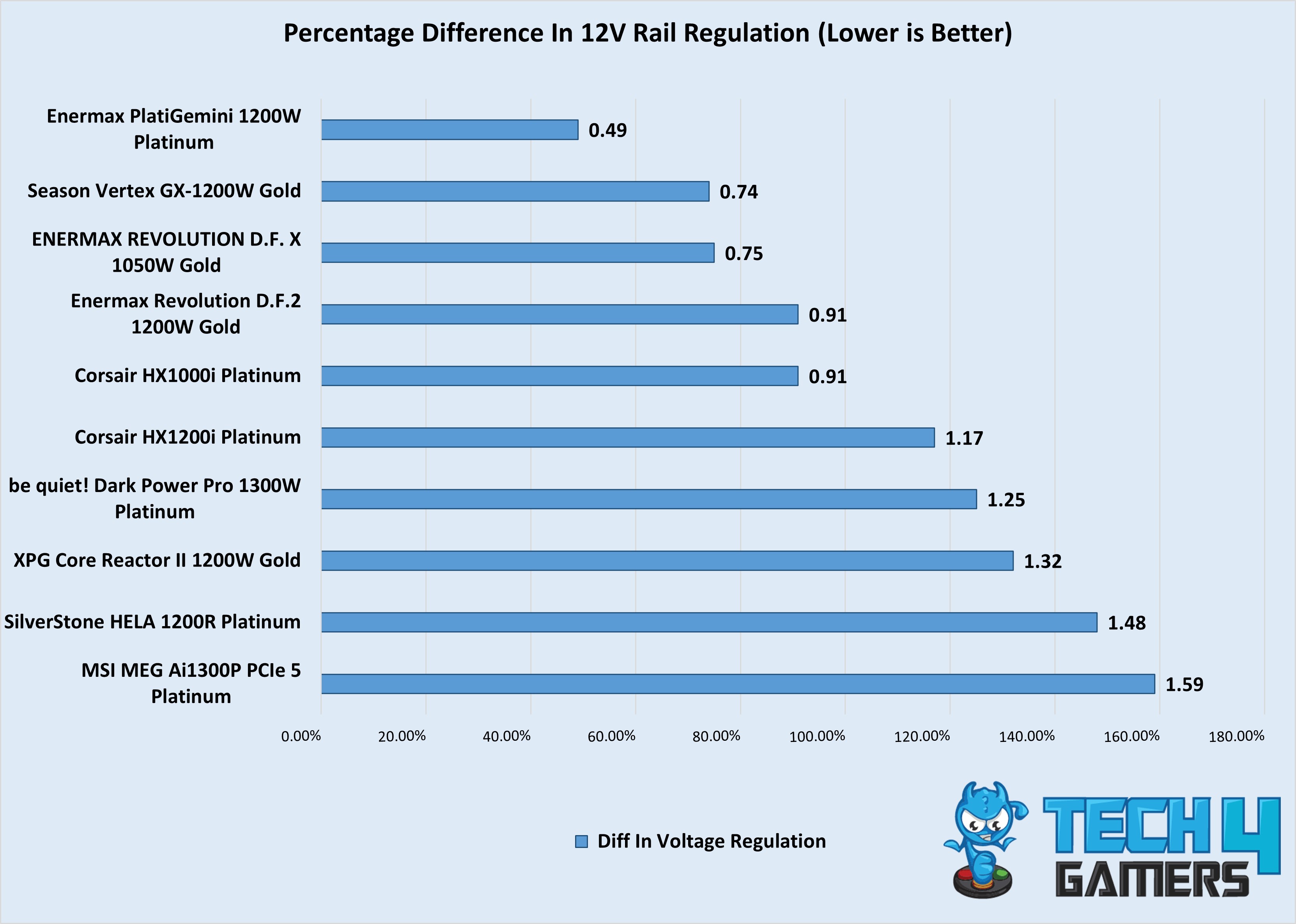
| Load in % | 12V | 5V | 3.3V |
|---|---|---|---|
| 20% | 11.96V | 5.04V | 3.30V |
| 50% | 11.86V | 5.03V | 3.29V |
| 70% | 11.82V | 5.03V | 3.29V |
| 90% | 11.78V | 5.03V | 3.29V |
| 100% | 11.77V | 5.02V | 3.28V |
In our test of 20-100% load, 12V rail voltage drops from 11.96V to a much lower value of 11.77V. However, this is still well within specs, and considering the fact that in this test, we take voltage variations into account, which came out to be 0.19V, which is fine.
But still, I think MSI should tune this platform further to maintain better voltage regulation, especially on higher loads.
We can’t currently fully test power excursions in which massive amounts of power are drawn within the cycle of a few milliseconds; these lower voltage levels may have a serious issue on those high-power excursions.
PSU Efficiency

| Load in % | Efficiency | Power Factor |
|---|---|---|
| 20% | 92.65% | 0.937 |
| 50% | 93.97% | 0.985 |
| 70% | 93.75% | 0.991 |
| 90% | 92.49% | 0.993 |
| 100% | 91.93% | 0.994 |
The efficiency numbers I saw during this test were good enough for MSI MEG Ai1300P to be crowned as a Platinum-rated PSU. But again, PSUs from other well-known brands having similar platforms from CWT performed really well in this test, even being only a Gold-rated PSUs.
Voltage Ripple Performance

| Load in % | 12V Ripple |
|---|---|
| 20% | 12.8mV |
| 50% | 14.4mV |
| 70% | 16.8mV |
| 90% | 17.6mV |
| 100% | 18.2mV |
After reviewing many PSUs, the majority of which were from CWT, I found the voltage ripple performance of MEG Ai1300P to be only good and not exceptional, which I surely expected and wanted it to be.
Temperatures
With heatsinks of more than adequate size and being a Platinum-rated PSU, MSI MEG Ai1300P kept it cool even when running at a Max 1300W load. The fan only kicked in when the load exceeded 650W. The PSU will remain fully silent even during light gaming sessions. MSI’s 120mm Hydro Dynamic Bearing fan was decently quiet.
Should You Buy it?
Buy It If
✅ You want Gaming Intelligence: MSI’s marketing gimmick of GI aside, if your PI (Personal Intelligence) predicts that in the future you will need to upgrade to the latest and greatest specs, then MEG Ai1300P can be the best pick for you.
✅ You like a software-controlled PSU: The option to tune and adjust PSU features & parameters can be handy for some, especially for the OCing enthusiasts who can increase the limit of OCP on the specific 12V rail responsible for providing power to the GPU(s).
✅ You prefer silent operations: The PSU remains absolutely silent and only starts spinning its fan when the load exceeds 650W.
Don’t Buy It If
❌ You don’t need excessive features: If your use case doesn’t require all the special and extra bells and whistles the PSU comes with.
❌ You’re a Gold digger: Many Gaming enthusiasts will be better off with the recent Gold-rated PSUs having ATX 3.0/3.1 specs, as long as they aren’t getting themselves into extreme OCing.
My Final Thoughts
MSI is committed to providing the best products to their users and with the addition of MEG Ai1300P PCIE5 in their widespread range of PSUs, MSI has now entered in the high-end Gaming Enthusiasts PSU club but still remains a few inches away from stealing the show.
The MSI MEG Ai1300P Platinum is a powerful and efficient PSU that offers solid performance for high-end gaming rigs, with premium build quality and attention to detail. Its modular design, combined with a well-implemented cooling system, keeps it running quietly during lighter loads, while maintaining stable performance across a range of power demands.
Despite its strengths, the PSU shows some room for improvement in voltage regulation, particularly under heavy loads, which might be a concern for users pushing their systems to the limit. The slight drop in voltage regulation and ripple performance holds it back from standing out as the best in its class. However, for most gamers and enthusiasts, the overall efficiency, quality components, and Platinum certification make it a strong and dependable choice for demanding setups.
Community Poll
Coming Next: Enermax Revolution D.F.2 1200W Review
Thank you! Please share your positive feedback. 🔋
How could we improve this post? Please Help us. 😔
[Errors Troubleshooting Expert]
Arsalan Shakil (aka GuyThatDoesEverything on YouTube) is a PC Tech Enthusiast and Electronic Geek. With over 10+ years of experience in Electronics, he then decided to explore Software Engineering to design embedded products and automate existing hardware solutions.
When he started tearing down old cameras to understand how they worked, he was shocked (literally, when he got zapped by a flash discharge capacitor), giving him the power (debatable) to fall in love with videography/photography. He also started making some fun videos that later became YouTube tech reviews.
Skills:
- 10+ years of experience in Electronics design, embedded solutions, and prototyping
- Majored in Software Engineering
- Research paper publication in IEEE for Embedded Military Uniform & LoRa WAN wireless technology
- Specialized in IoT Solutions
- PC Enthusiast & PC Modder
In his local region, he’s known to expose cheap PSU brands, often claiming fake certification or false claims on the box. He’s a true nerd and needed some friends in his life. Then he met some guys who work at Tech4Gamers, and they also came out to be equal nerds who suggested he join Tech4Gamers as a Hardware Expert.
 Threads
Threads


